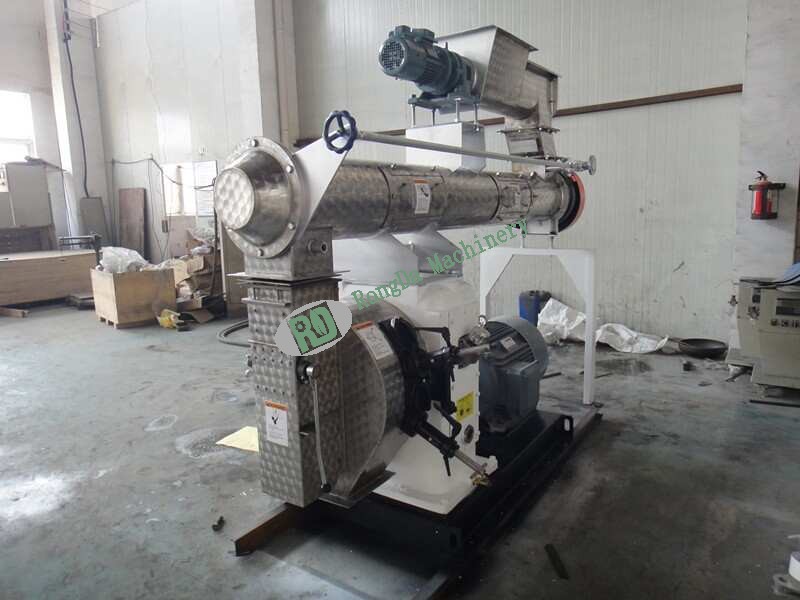Welcome to Rongda Machinery Co., Ltd
Toggle Navigation
If you're looking to revolutionize your approach to animal feed, investing in the right feed milling machine is a game-changer. These machines transform raw ingredients into nutritious feed, ensuring healthy and productive livestock. Whether you're a seasoned farmer or just starting out, understanding the right feed mill can make a significant difference in your operations.
The Evolution of Feed Production
Proper nutrition is the cornerstone of a healthy livestock operation. The quality of the feed directly impacts your animals' health, productivity, and overall well-being. Transitioning from manual feed preparation to an automated system not only improves efficiency but also enhances consistency and safety.
Decoding the Types of Feed Mills
There’s a variety of feed milling machines tailored to different needs. Each type has its unique strengths:
Hammer Mills: Picture a kitchen grinder but for feed. These machines are great for versatility, handling a range of materials and offering flexibility in particle size adjustment.
Roller Mills: Think of them as the uniformizer, ensuring even particle sizes which enhance digestibility, perfect for grains like wheat and corn.
Impact Mills: These high-powered machines excel with fibrous materials like hay, breaking them down efficiently for optimal roughage.
Ring Mills: Ideal for large-scale operations, these mills deliver high throughput and uniform particle sizes, essential for industrial feed production.
Components That Ensure Efficiency
Every machine is a team, and each part plays a crucial role:
Hopper: The heart of the operation, holding raw materials before they're processed.
Grinding Mechanism: The heart of the machine, breaking down materials into manageable particles.
Sieve/Screen: Ensures the processed feed meets the required particle size, maintaining quality.
Discharge Chute: Transfer the processed feed efficiently to storage or packaging areas.
Choosing the Right Machine: A Tailored Approach
Budget Considerations: Every farmer has limits, so understanding your budget is key to selecting a machine that fits your financial capacity.
Feed Type and Purpose: The type of feed you produce and the animals it's intended for will guide your choice.
Production Capacity: Assess whether you need a machine for small-scale operations or a large-scale setup.
Maintenance and Durability: Investing in durable components ensures longevity and reliability.
Maintaining Feed Quality: A Cornerstone of Success
Quality control isn't just a checklist; it's a process that involves regular maintenance and inspections. Ensuring each machine runs smoothly is vital for consistent feed output and animal health.
Efficiency and Sustainability
Modern machines are designed with energy efficiency in mind, not just for cost savings but also for a lower environmental footprint. Opting for models that minimize energy consumption is a smart move.
Safety: Protecting Your Team
Safety isn, of course, non-negotiable. Operators need the right gear, from safety glasses and gloves to sturdy footwear, to protect themselves during operations.
The Role of Energy Efficiency
Investing in energy-efficient machines can lead to significant cost savings and environmental benefits. Regular maintenance is key to unlocking these advantages.
Putting It All Together
By understanding the types, components, and maintenance, you can choose the perfect machine for your needs. Each machine is a tool that, when used wisely, enhances your operations and supports the health and productivity of your livestock.

FAQs: Your Guide to Feed Mills
What’s the best feed mill for small farms? Hammer mills are ideal due to their flexibility and affordability.
How often should I maintain my machine? Follow the manufacturer's guidelines for optimal performance.
Can machines process various materials? Yes, they handle grains, forages, and other ingredients, offering versatility.
What safety gear should operators wear? Safety glasses, gloves, and sturdy footwear are essential.
How do I ensure energy efficiency? Opt for energy-efficient models and maintain them regularly.
Conclusion: Empowering Your Farm with Technology
In conclusion, animal feed milling machines are essential for efficient and high-quality feed production. By making informed choices, you can enhance your operations, ensuring your livestock thrives. Embrace the right technology, and watch your farming success soar.
Final Thoughts
The future of feed production lies in automation and efficiency. By considering all these factors, you can select a machine that not only meets your needs but also elevates your farming operations to new heights. Happy farming!